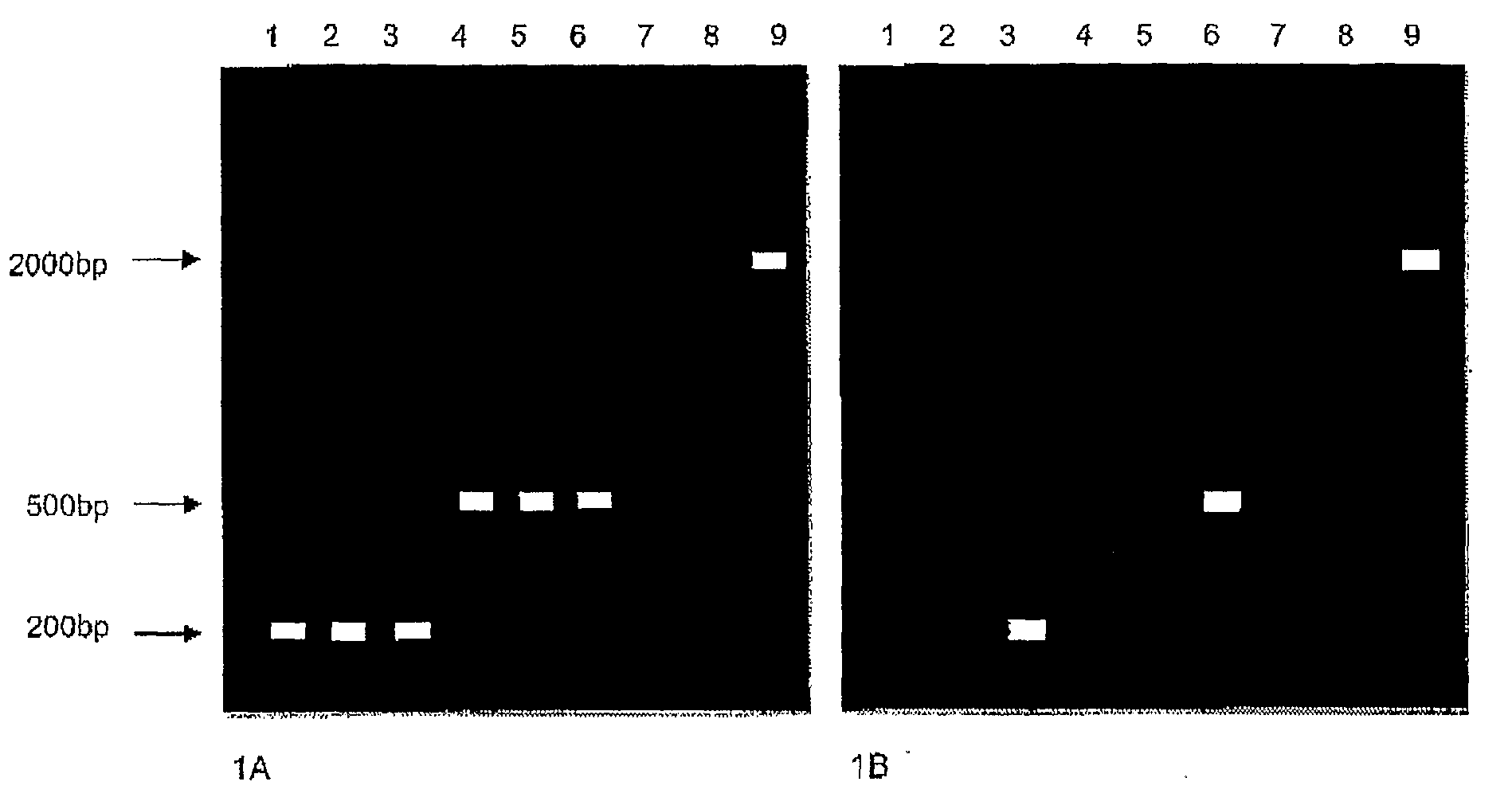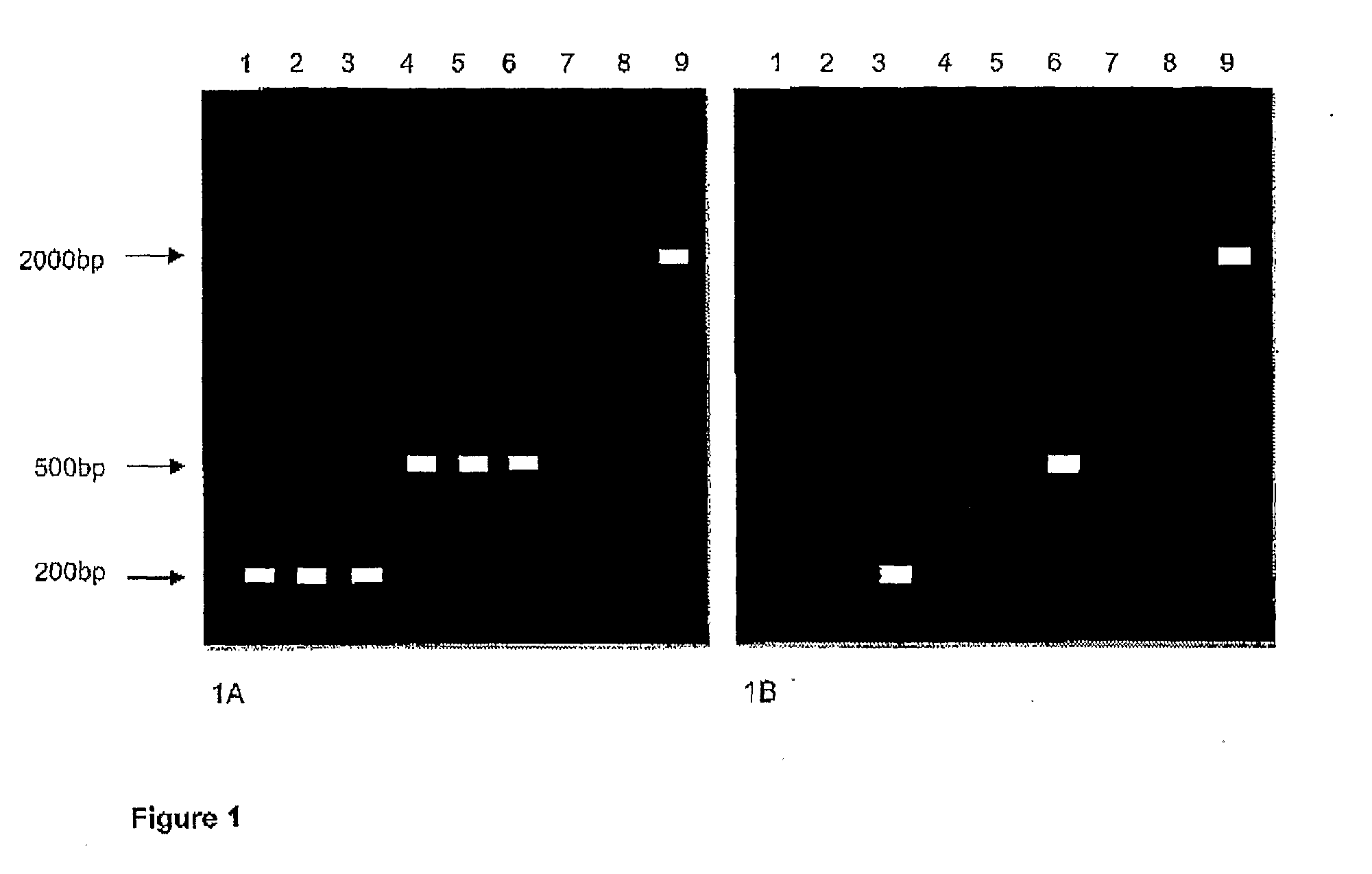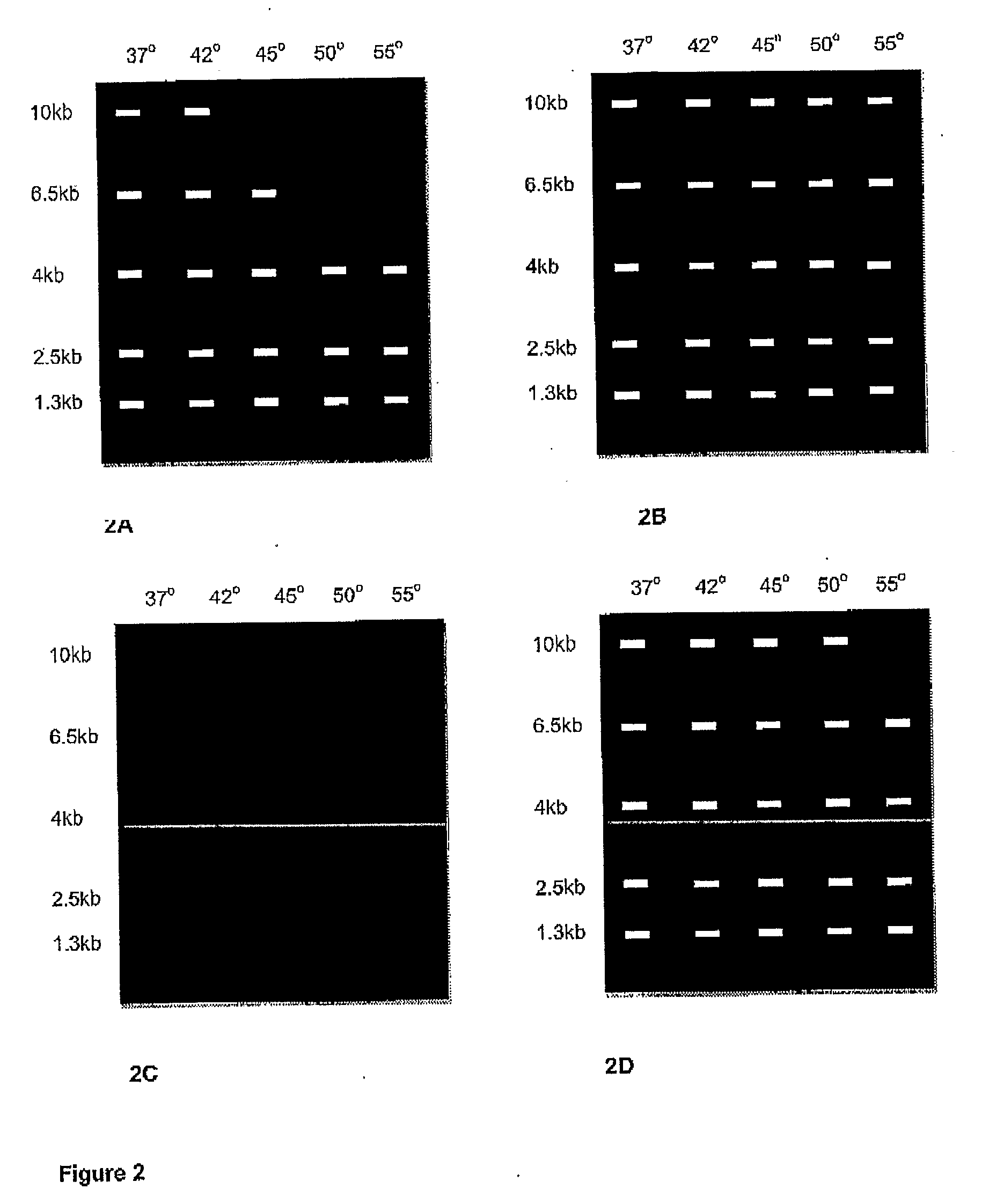Enzymes for amplification and copying bisulphite modified nucleic acids
a technology of nucleic acids and enzymes, applied in the field of bisulphite-treated nucleic acids, can solve the problems of unable to sequence and assemble the complete genome of an organism, difficult to successfully analyse small numbers of cells for their genomic methylation status, and degradation of between 84-96% of the original input dna, so as to eliminate damage and loss of nucleic acids, enhance function, and enhance processing ability
- Summary
- Abstract
- Description
- Claims
- Application Information
AI Technical Summary
Benefits of technology
Problems solved by technology
Method used
Image
Examples
examples
Methods and Reagents
[0093]Chemicals can be obtained as follows: Ethanol from Aldrich (St. Louis Mo.; 200 proof E702-3); Isopropanol from Sigma (St. Louis Mo.; 99%+Sigma I-9516); Mineral oil from Sigma (M-5904); Quinol from BDH (AnalaR #103122E); Sodium acetate solution 3M from Sigma (5-7899); Sodium chloride from Sigma (ACS reagent S9888); and Sodium hydroxide from BDH (AnalaR #10252.4X); Sodium metabisulphite from BDH (AnalaR #10356); Diethyl ether from Sigma (St. Louis Mo.; 309958): Hexane from Sigma (St. Louis Mo.; 650420); Luria broth from Oxoid (Liverpool; CM0996B); Magnesium chloride from Sigma (St. Louis Mo.; 63069); Mineral oil from Sigma (M-5904); Potassium chloride from Sigma (St. Louis Mo.; 60142); Span 80 From Fluke (Buchs CH; 85548); Tetracycline hydrochloride from Sigma (St. Louis Mo.; T8032); Triton X-100 from Sigma (St. Louis Mo.; 93426); Trizma hydrochloride from Sigma (St. Louis Mo.; T5941); Tween 80 from Sigma (St. Louis Mo.; P8074).
[0094]Enzymes / Reagents can be o...
PUM
 Login to View More
Login to View More Abstract
Description
Claims
Application Information
 Login to View More
Login to View More - R&D
- Intellectual Property
- Life Sciences
- Materials
- Tech Scout
- Unparalleled Data Quality
- Higher Quality Content
- 60% Fewer Hallucinations
Browse by: Latest US Patents, China's latest patents, Technical Efficacy Thesaurus, Application Domain, Technology Topic, Popular Technical Reports.
© 2025 PatSnap. All rights reserved.Legal|Privacy policy|Modern Slavery Act Transparency Statement|Sitemap|About US| Contact US: help@patsnap.com



